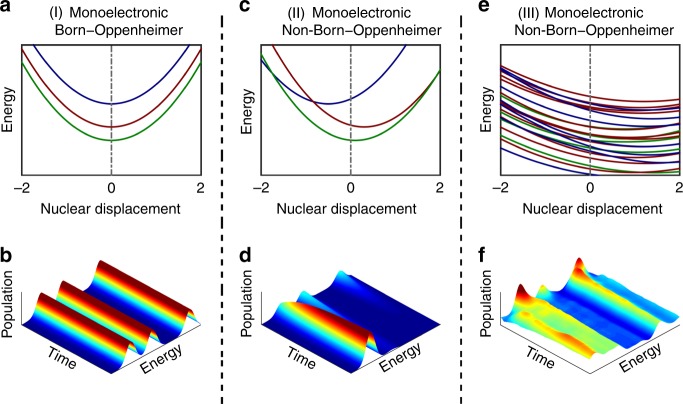Fig. 3.
Relaxation dynamics of naphthalene at different levels of approximation. Case I where monoelectronic and Born−Oppenheimer (adiabatic) approximations are considered: a Potential energy surfaces of uncoupled electronic states and b corresponding time-dependent populations, which shows no transfer of population between states. Case II where monoelectronic and non-Born−Oppenheimer (non-adiabatic) approximations are considered: c Potential energy surfaces of states with vibronic couplings (conical intersections) and d corresponding time-dependent populations which shows that population can be transferred between the states. Case III where both monoelectronic and Born−Oppenheimer approximations break down. This last panel shows the situation studied in the present work. In this regime, due to the multielectronic effects, a quasi-continuum of electronic (shake-up) states is formed and the population between them can be transferred very efficiently due to the strong nonadiabatic effects resulting in a large number of conical intersections. A naive interpretation will lead to the conclusion that the time scale decreases with the increase of the energy in contradiction with experimental observation. e Computed potential energy surfaces of naphthalene taking into account for multielectronic and non-Born−Oppenheimer effects and f the corresponding time-dependent populations that show that three main contributions appear. Like in the experiment, we observe that slower time scale is associated with a higher energy state

